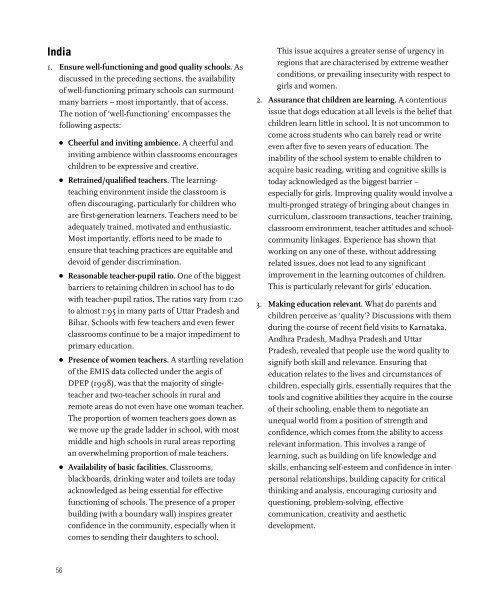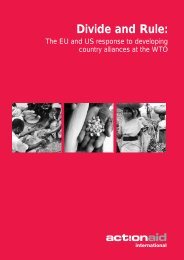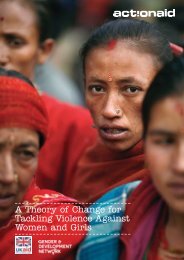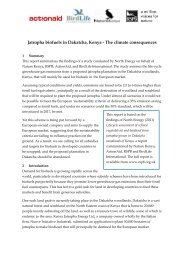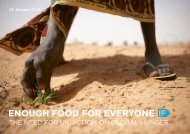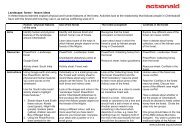A fair chance - United Nations Girls' Education Initiative
A fair chance - United Nations Girls' Education Initiative
A fair chance - United Nations Girls' Education Initiative
You also want an ePaper? Increase the reach of your titles
YUMPU automatically turns print PDFs into web optimized ePapers that Google loves.
India1. Ensure well-functioning and good quality schools. Asdiscussed in the preceding sections, the availabilityof well-functioning primary schools can surmountmany barriers – most importantly, that of access.The notion of ‘well-functioning’ encompasses thefollowing aspects:●●●●●Cheerful and inviting ambience. A cheerful andinviting ambience within classrooms encourageschildren to be expressive and creative.Retrained/qualified teachers. The learningteachingenvironment inside the classroom isoften discouraging, particularly for children whoare first-generation learners. Teachers need to beadequately trained, motivated and enthusiastic.Most importantly, efforts need to be made toensure that teaching practices are equitable anddevoid of gender discrimination.Reasonable teacher-pupil ratio. One of the biggestbarriers to retaining children in school has to dowith teacher-pupil ratios. The ratios vary from 1:20to almost 1:95 in many parts of Uttar Pradesh andBihar. Schools with few teachers and even fewerclassrooms continue to be a major impediment toprimary education.Presence of women teachers. A startling revelationof the EMIS data collected under the aegis ofDPEP (1998), was that the majority of singleteacherand two-teacher schools in rural andremote areas do not even have one woman teacher.The proportion of women teachers goes down aswe move up the grade ladder in school, with mostmiddle and high schools in rural areas reportingan overwhelming proportion of male teachers.Availability of basic facilities. Classrooms,blackboards, drinking water and toilets are todayacknowledged as being essential for effectivefunctioning of schools. The presence of a properbuilding (with a boundary wall) inspires greaterconfidence in the community, especially when itcomes to sending their daughters to school.This issue acquires a greater sense of urgency inregions that are characterised by extreme weatherconditions, or prevailing insecurity with respect togirls and women.2. Assurance that children are learning. A contentiousissue that dogs education at all levels is the belief thatchildren learn little in school. It is not uncommon tocome across students who can barely read or writeeven after five to seven years of education. Theinability of the school system to enable children toacquire basic reading, writing and cognitive skills istoday acknowledged as the biggest barrier –especially for girls. Improving quality would involve amulti-pronged strategy of bringing about changes incurriculum, classroom transactions, teacher training,classroom environment, teacher attitudes and schoolcommunitylinkages. Experience has shown thatworking on any one of these, without addressingrelated issues, does not lead to any significantimprovement in the learning outcomes of children.This is particularly relevant for girls’ education.3. Making education relevant. What do parents andchildren perceive as ‘quality’? Discussions with themduring the course of recent field visits to Karnataka,Andhra Pradesh, Madhya Pradesh and UttarPradesh, revealed that people use the word quality tosignify both skill and relevance. Ensuring thateducation relates to the lives and circumstances ofchildren, especially girls, essentially requires that thetools and cognitive abilities they acquire in the courseof their schooling, enable them to negotiate anunequal world from a position of strength andconfidence, which comes from the ability to accessrelevant information. This involves a range oflearning, such as building on life knowledge andskills, enhancing self-esteem and confidence in interpersonalrelationships, building capacity for criticalthinking and analysis, encouraging curiosity andquestioning, problem-solving, effectivecommunication, creativity and aestheticdevelopment.56


